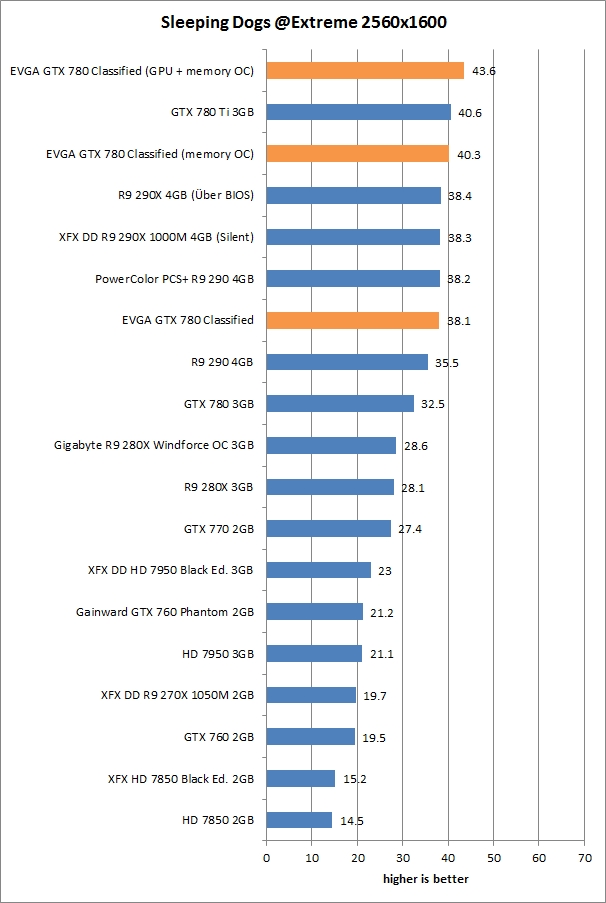Index
Naturally, OC results greatly depend on quality of graphics chips, since not all parts will handle extreme clocks the same way. Still, even though all graphics chips aren’t equal, you can bet that the chips running GTX 780 Classified cards will work better than average.
The GTX 780 Classified comes with a factory overclock, where the base GPU clock ended up at 993MHz (Ref. Base clock is 863MHz). Using the default fan and voltage settings as defined in the VGA BIOS we were able to raise Base GPU clock for additional 130MHz. After our little tweak, combined with GPU Boost 2.0 we saw the GTX 780 Classified inching toward the 1280MHz+ range (at stock Classified clocks the boost clock was 1163MHz).
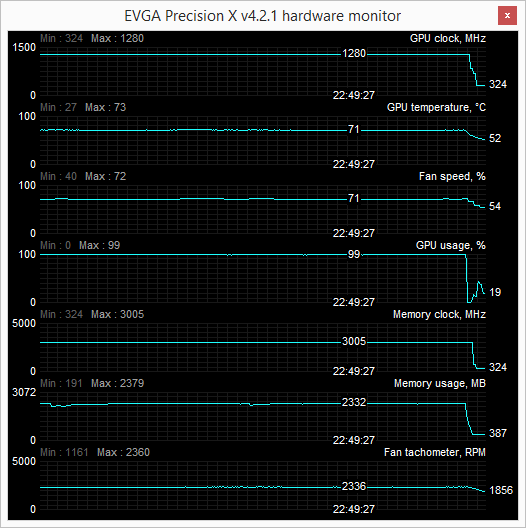
Of course, the card requires higher voltages to attain higher GPU clocks. Before we started tinkering with voltage settings, we took a peek at some readings. With an overclock of 130MHz the card stayed under 75 degrees Celsius and the fan was hitting 72% or 2360RPM. At stock clocks the fan usually runs at 63% or 2085RPM. The card was not very loud at 72%.
As we already mentioned EVBOT is no longer available directly from EVGA and if you do not have one, than it will be hard to find. Luckily the overclocker community came up with software that can easily replace the add-on. The GTX Classified Controller allows users to jack up the GPU voltage to 1.65v with no hardware mods. FBVDD and PEXVDD voltages can be increased to 1.8v and 1.242v respectively. EVGA does not official endorse the use of this clever tool. We advise users to stick to GPU voltages of up to 1.35v.
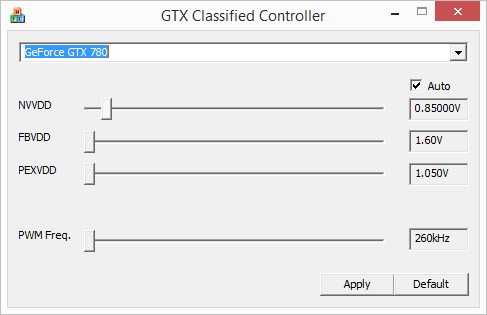
As the screenshot below indicates, the GPU voltage in PrecisionX can be increased only by a pointless 38mV.
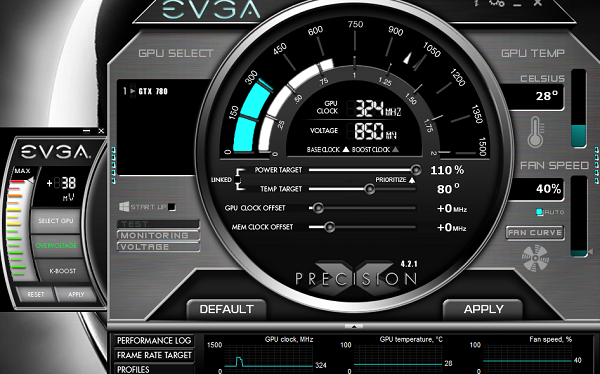
The GTX 780 Classified can easily be overclocked for fun or for superior performance. If you are looking to get higher frame rates, you need to overclock the memory, too.
A simple memory overclock boosted Sleeping Dogs frame rates by 5 percent.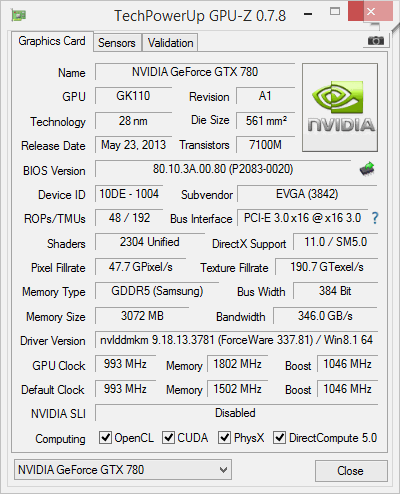
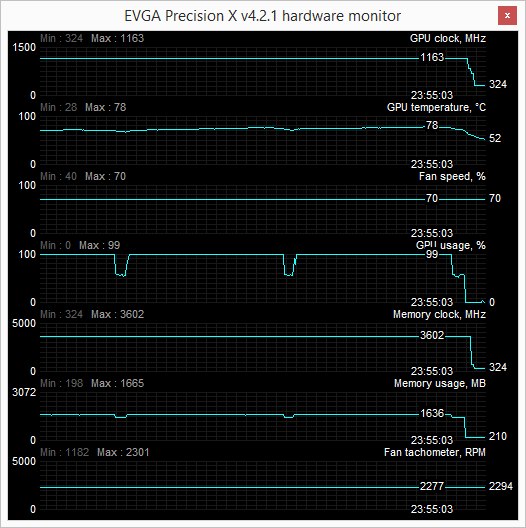
Only Memory OC
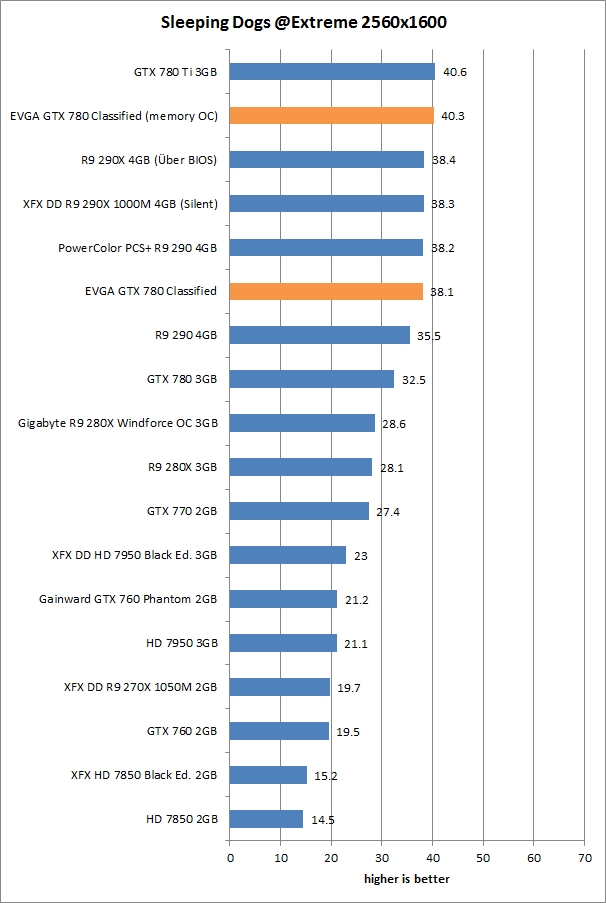
For more serious overclocking we decided to push the fan to 95% RPM and at 1.27v for the GPU we managed to attain 1380MHz. However, the clock started dropping off soon. We are confident that the card can sustain such clocks with superior cooling, i.e. a good water block or even LN2 but that’s something for extreme overclockers rather than gamers.
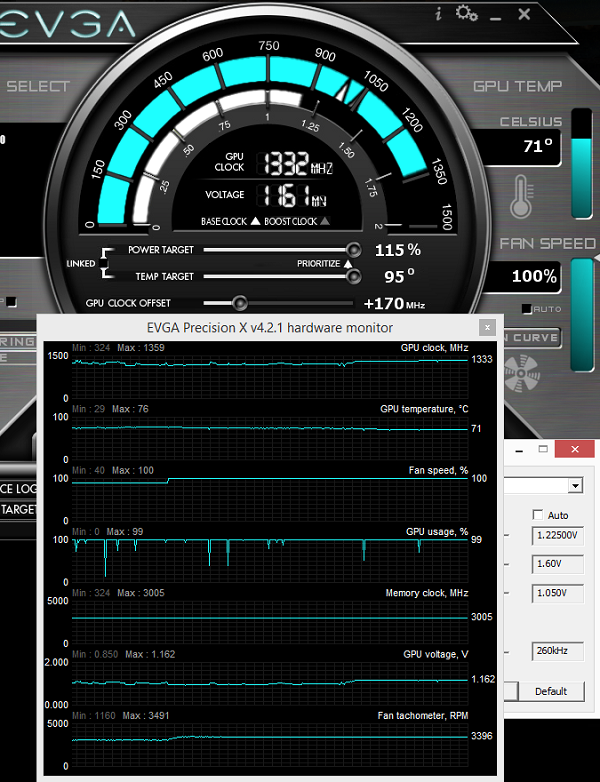
With the GPU and memory overclocked, we got the following results.